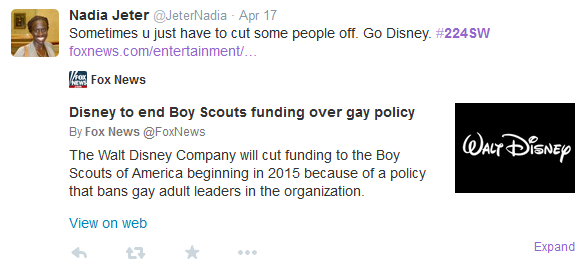The Power of Words: Using Poetic Analysis in a Social Work Research Course
Editor’s Note: This blog post was written by Amber Sutton, LICSW, ABD, a social work instructor at the University of Alabama at Birmingham, in collaboration with students from her undergraduate social work research course during the Spring 2022 semester. The students are (in alphabetical order): Iva Burdette, Jackie Chavez-Martinez, Jennifer Dussich, Courtney Kramer-Williams, Katie Kramer, Hannah Marsh, Rachel Shunnarah, Natalie Trammell, Ahmia Vain, and Ella Wolfe. In this blog post, Amber and the students share how they used poetic analysis to answer some age-old questions – What does it mean to be a social worker, and what is research? You can also read their two poems.
When agreeing to teach SW 320 Research Methods to BSW students at the University of Alabama at Birmingham (UAB), I knew I wanted to highlight alternative ways to conduct research that add an element of humanity to the data and encourage the students to use research to share power.
We started the class by reading Ann Hartman’s 1990 article, The Many Ways of Knowing. This article remains just as relevant today as it did then and has played a fundamental role in developing my relationship with research. Hartman’s editorial essay calls on social workers to recognize that each contribution adds to our knowledge and deepens our understanding. She boldly states, “there are many truths, and there are many ways of knowing” (p. 3). This article served as the foundation of the course because I wanted the students to understand that quantitative and qualitative methods are an integral part of social work research. Our profession misses out when we center on quantitative research as the only valid way of knowing.
During our very first class, I provided large post-it notes and markers. Then, allotting 20 minutes, I asked the students to answer these two questions in a way that felt most comfortable to them (words, drawings, etc.):
- What does being a professional social worker mean to you?
- How do you define research?
Digital Advocacy in the Social Work Classroom: Students speaking out online


Editor’s Note: Julia Kleinschmit is a clinical associate professor in the School of Social Work at The University of Iowa, and Breanne Benson is a currently MSW student in the School of Social Work at The University of Iowa. In this blog post, Julia writes about an assignment that uses social media to promote advocacy skills and professionalism among social work students. Breanne offers her experience with the assignment as a student and reflects on how she grew her skills as a future social worker. Julia can be found on LinkedIn, and Breanne is on Instagram at _bmbenson.
Addressing Technology in Changing Social Work Environment
The Council on Social Work Education’s (CSWE) Competency 1: Demonstrate Ethical and Professional Behavior requires social workers to use technology ethically and appropriately to facilitate practice outcomes. Many have focused on the need for confidentiality in electronic communication and social media boundary management. These are important issues, but at the University of Iowa’s School of Social Work, Megan Gilster, Stephen Cummings, and I believed we could also teach MSW students to use their online identities and social media as powerful tools for effective advocacy.
Review of Teaching & Learning in Social Work for 2018
One of the reasons I like a good “end-of-the-year list” is the opportunity to reflect on what I did and did not miss out on over the past year. I’m always thrilled to discover I read one or maybe even two of the most notable books on the New York Times yearly list. Then, I start planning my reading wish list for the coming year, which usually involves magical thinking about reading every winner of the Nobel Prize for Literature or the all the Pulitzer Prize winners for Non-Fiction from the last ten years. Even if I don’t actually read all of these books, I believe in having some goals for my reading and other activities. For the Teaching and Learning in Social Work Blog, I had three goals for 2018:
1 .Write or publish 30 blog posts
2. Increase the number of blog subscribers from 100 to 200
3. Publish 10 guest educator blog posts
Here is how those goals worked out:
1. Wrote only 13 blog posts during the year, but published a total of 21 posts (70% completed)
2. Only added 40 more subscribers to the blog (40% completed)
3. Published 8 guest educators posts (80% completed)
While not all my goals were achieved, I was still able to collaborate with others to accomplish some solid writing for the blog including information about projects that I have been working on, and all my conference presentations for the year. Below is a list of this year’s posts, grouped around the topics of projects, guest educator posts, and conference presentations.
Projects: These posts describe new projects that I started or worked on during 2018:
Creating an Infographic in a Social Work Course: A Student’s Perspective from Danielle Davis
Last year, Dr. Nathalie P. Jones, from the Department of Social Work at Tarleton State University, wrote a blog post about her experience with a tech-meditated assignment for her social work courses – creating an infographic. She frequently uses technology in her classrooms to help students improve their digital literacy skills, and specifically uses infographics as tools for digital storytelling. As a follow-up to Dr. Jones’ post, I asked one her students, Danielle Davis, to share her thoughts on the assignment, what it was like to create an infographic, and how the knowledge and skills from the assignment might be incorporated in her future role as a social worker. Here are Danielle’s responses to my questions:
What were your initial reaction to the infographic assignment?
I was very hesitant when Dr. Jones initially discussed the infographic assignment in our service learning course. It was the second week of my social work undergraduate program, and I remember wondering if anyone else was as confused as I felt in that moment. I was worried about not being able to complete the assignment according to the grading rubric. I had never created an infographic before, however, I was willing to try. The infographic assignment allowed me the opportunity to be creative and share the information learned about working with vulnerable populations. Being able to use my creative side in an assignment was very appealing.
How did your reaction change over the semester?
Over the semester my reaction to the assignment changed entirely. As we worked on the various steps in the assignment, I started to gain a better understanding about the importance of an infographic and how they can be used. The infographic assignment ended up being my favorite assignment. I enjoyed being able to take a social work issue that mattered, build the infographic that reflected real statistics, and then share the information in Twitter to a large, public audience. I was amazed that people from all over the nation could come together in one place on social media and share information about social work by using infographics.
Taking a Media Savvy Social Work Course: A Student’s Perspective from Dottie-Jean Turenne
Ms. Alyssa Lotmore, from the School of Social Welfare at the University at Albany and the co-host of The Social Workers Radio Talk Show, recently wrote about her media savvy social work course. This courses helps students learn beneficial skills about seeing the public as the client and using the media to reach those who may never had considered seeing or using a social worker. As a follow-up to Ms. Lotmore’s post, I asked one her students, Dottie-Jean Turenne, to share her thoughts on the course, what it was like to use media as a social work student, and how the knowledge and skills from the course might be incorporated in her future role as a social worker. Here are Dottie-Jean’s responses to my questions:
1, What interested you in taking this class in the first place?
As you watch the news or read stories online, you often hear social workers being stigmatized as only child protective service workers (CPS) or that they only provide services to the poor, however, as this is incorrect. Social workers are not regularly recognized for the inspiration and empowerment they provide to all vulnerable populations. Taking this course became an interest of mine, once I realized that I could use media to be a strong voice. I could use my voice not only as an advocate, but to show the world the true meaning of being a social worker and the passion we have to empower others.
2. What was your initial reaction to interviewing individuals for the radio, podcasts or other public presentations?
I have always had a fear of public speaking, so initially I was nervous at the thought of interviewing individuals for the radio. To overcome these feelings, I found it most helpful to become familiar with the specific topic and to be prepared with strong questions. In my first interview, I had some great responses to the guest, but the lack of confidence was clear during the first part of the show. However, once I became comfortable with being on the radio, my confidence begin to build.
Q & A: Student Perspective on Twitter Assignment
Ms. Bobbi Arrington (@bobbielle) is an instructor at School of Social Work at Monmouth University. In this blog post Ms. Arrington interviews Ms. Nadia Jeter, a BSW student at Monmouth University, who participated in Twitter assignment during an Human Behavior and the Social Environment course. In another post, Ms. Arrington and Dr. Becky Anthony (@becky_anthony ), an assistant professor of social work at Salisbury University, write about how they developed and managed an assignment using Twitter in their Human Behavior and the Social Environment Courses.
Recently, I sat down with Nadia Jeter, a BSW social work student at Monmouth University. Nadia was in Professor Becky Anthony’s class when the Twitter project was started. Nadia and I sat down in the back of a brightly lit classroom, papers and books cluttered the desk as her last class had just finished. She has a bright infectious smile and a large personality that is charismatic. It’s not surprising that she has become a major advocate for vulnerable and marginalized populations using Twitter. It took just a few seconds for her to recall back to the spring of 2013 and the assignment.
BA: What did you initially think of the assignment?
NJ: I hated it! I asked was it mandatory and Professor Anthony, with her nice smile and her hands folded (she imitates Professor Anthony’s hand expression) she said, “Yes – but don’t worry. We’ll show you how to do it!” I had just got on facebook and I hated it! It wasn’t user friendly.
BA: How was it learning to use Twitter?
NJ: It’s actually very user friendly. I took me all of two minutes to set up. It’s really easy, accept for the fact that you have only one hundred forty characters to express yourself! This was a very good tool for me because it was so simple and I really value simplicity.
BA: How did you develop your tweets and how you responded to replies?
NJ: (she laughs) In the end I was actually very thankful that you only have one hundred forty characters! Having only a few words made you choose what was important. You had to take out the bread and just give the meat. Because…yeah…you have to just give them a fact. No explanation. So if you retweet an article you just give them a brief statement. Say you’re reading something and you say to yourself…this is so corrupt. You can retweet and just say “corruption in the judicial system.” The person has to look to see what you are talking about.







